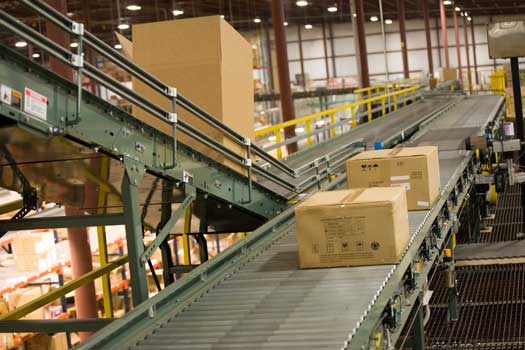Get to market in half the time using emulation, even with highly complex motion control installations.

You need to increase capacity, so you’re adding a new line. Maybe you want to bring outsourcing inside, gear up for a new product launch, or rearrange your geographical footprint to lower distribution costs. Either way, every day without that new line is another day of lost revenue. What do you do?
Testing a new controls system off-site using emulation can get a new line up and running at capacity in half the time, for half the cost, with half the effort. System integrator Polytron achieved such results in a highly complex consumer products installation. The plant needed another line that would lead to a new high-speed palletizer, including:
• A maze of conveyors 4 miles long that would need to be overhauled with 11 new tie-in points.
• Multiple decision points, along with integration with some systems that were three years old and others that were nearly 30 years old.
• Four new programmable logic controllers (PLCs), plus modifications to three existing PLCs.
The line had to be at capacity as soon as possible, since the customer already had demand for everything it could make. Until the new line reached capacity, vital revenue was missing.
Polytron designed, programmed, and debugged the new controls system off-site using its emulation tools. Unlike traditional systems with field debugging, these control programs were 95% debugged on day one, leading to much faster start-up and lower costs. On-site time was reduced by 10 weeks to half the time it would’ve taken to perform a traditional start-up. After three days of start-up, the new line ran at 80% of capacity.
Simulation just checks code inside the PLC. Emulation requires the controls system to operate a computer model of the installed system in real time, just as if it were running the new system on the plant floor, which allows 95% debugging and verification before site installation. Running a computer model of the system is more powerful than running the system in the field because emulation can address more variables and yield more useful data in less time. It lets an engineer run different scenarios without impacting real production.
Emulation allows test running a new bottle size, or package format, and finding out how the line will operate, without losing production time on the running line. Imagine testing 10 years of forecasted production on a finished goods handling system. Emulation makes that possible.
– Brent Stromwall is vice president, Polytron. Edited by Mark T. Hoske, content manager, CFE Media, Control Engineering, [email protected].
More details from Polytron about:
– Using emulation
– Instant project start-ups
Select an integrator from the Control Engineering Automation Integrator Guide.



